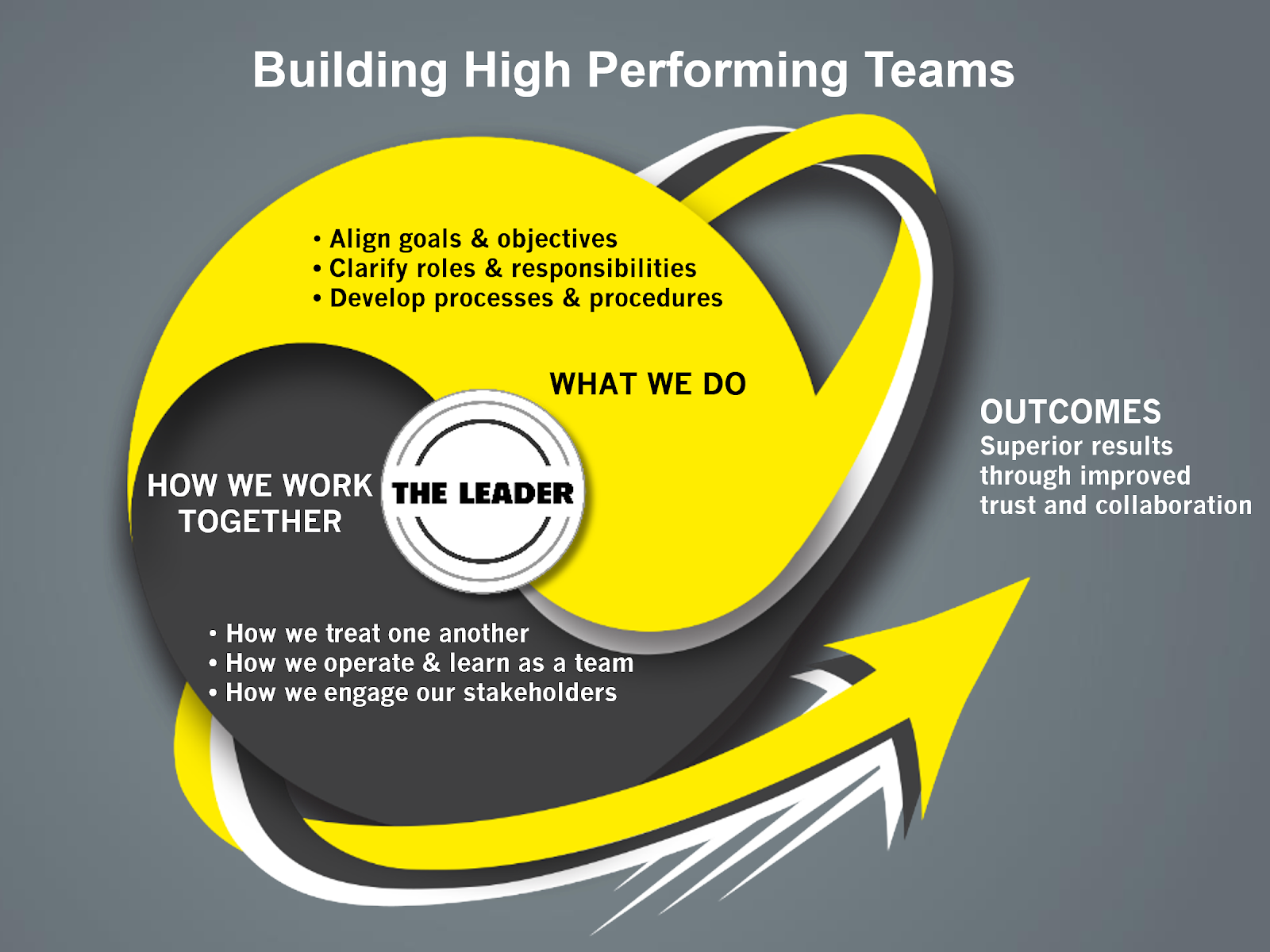 Building High Performing Teams
Building High Performing Teams
Summary
The need to build high performing teams exists anywhere work needs to get done.
There are very few instances where just one individual is responsible for delivering
results. It takes a team effort. This practical approach has been successfully applied
across hundreds of teams in corporations, non-profits, and communities. It focuses on
three key areas: Leadership, WHAT we do, HOW we work together.


Usage
Here is a sample of where the High Performing Teams approach is used:
- Launching a new team
- Diagnosing issues with an existing team
- Consulting with a team leader on their role in building the team
- Providing a framework for continuous team improvement
- Developing team members in areas needing improvement
- Teaching consultants and coaches who support team leaders
Description
Our multi-year research study confirmed that there are three major factors that all teams must pay attention to and consistently address if they intend to become a high performing team.
Team Leader
Leadership is a team sport, a social process everyone contributes to and we discovered that the best teams have a team leader who provides constructive feedback and coaching support when members need help or act in ways that are unacceptable. Leaders of top performing teams act decisively and provide very clear direction when their team gets off track
What We Do
The best teams ensure that their strategies, goals and objectives, roles and responsibilities, and team processes and procedures are all very clear and continuously updated and aligned.
How We Work Together
Teams that aspire to be great need to pay careful attention to their team's culture or how they work together, how members treat one another, how members operate, learn and improve as a team, and how the team engages with its key stakeholders.
Sample Activity
A team charter is a document that can create a great deal of clarity up front, formalizes the existence of a team and communicates a project's scope, objectives, and overall approach to key stakeholders. The charter helps team leaders, members and stakeholders understand the team's purpose, goals, roles and responsibilities, and operating guidelines. This activity provides a template and guidelines for developing a team charter.
Here are some key considerations when adapting this material for your team:
- Focus on Impact: Select only the sections that will provide the most value and clarity for your team.
- Consider External Support: Utilizing an external partner, coach, or facilitator can often be beneficial.
- Approach to Drafting: While co-creating content with your team generally leads to greater buy-in, support, and agreement, you may also find advantages in creating an initial draft first and then refining it with team input. Determine the best approach based on your team's needs.
- The team leader, along with direction from the sponsor, develops an initial draft of the charter.
- Send a draft of the charter to team members in advance of the team meeting. Ask team members to review the draft and come prepared to provide feedback and discuss the charter at the meeting.
- Ideally, the full charter is reviewed, discussed, and finalized at this team meeting. However, some teams may choose to discuss one section of the charter at each of several team meetings until the charter is complete.
- Finalize the charter and review with your team’s sponsor(s). Sign the document (optional).
- Communicate (post or send) the final charter to all core and ad hoc team members.



